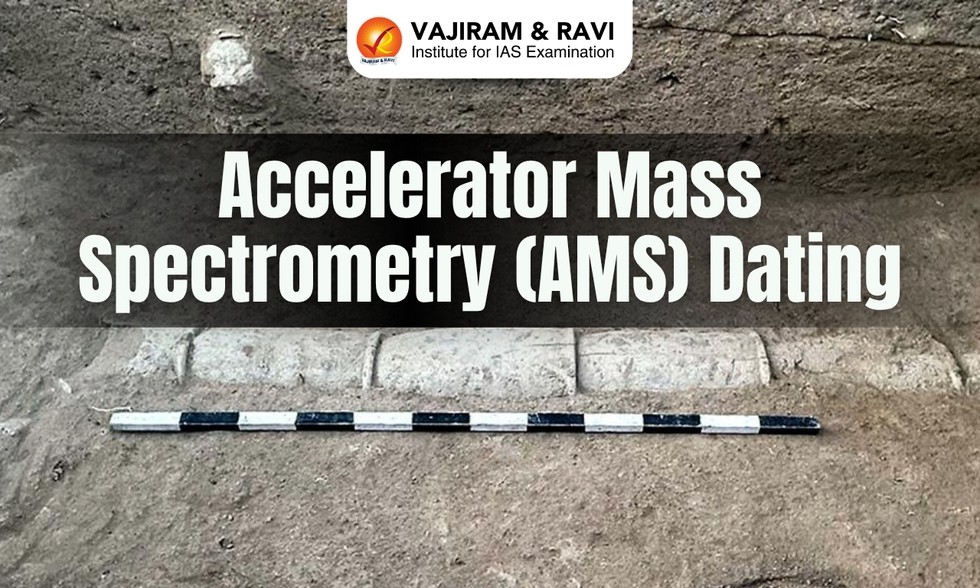About Accelerator Mass Spectrometry (AMS) Dating:
- It is a precise method for measuring the radioactive isotope values of Carbon-14 (C-14).
- It involves accelerating the ions to extraordinarily high kinetic energies followed by mass analysis.
- It is used primarily in determining carbon 14 content of archaeological artifacts and geological samples.
- It detects atoms of specific elements according to their atomic weights.
- There are essentially two parts in the process of radiocarbon dating through accelerator mass spectrometry.
- The first part involves accelerating the ions to extraordinarily high kinetic energies, and the subsequent step involves mass analysis.
- Applications: It is most widely used for isotope studies of 14C, which has applications in a variety of fields such as radiocarbon dating, climate studies, and biomedical analysis.
- Advantages of Accelerator Mass Spectrometry (AMS) Dating
- Sample size: Accelerator mass spectrometers need only as little as 20 milligrams and as high as 500 milligrams for certain samples whereas conventional methods need at least 10 grams in samples.
- Time: It takes less time to analyze samples for carbon 14 content compared to radiometric dating methods that can take one or two days.
- AMS measurements usually achieve higher precision than radiometric dating methods.
